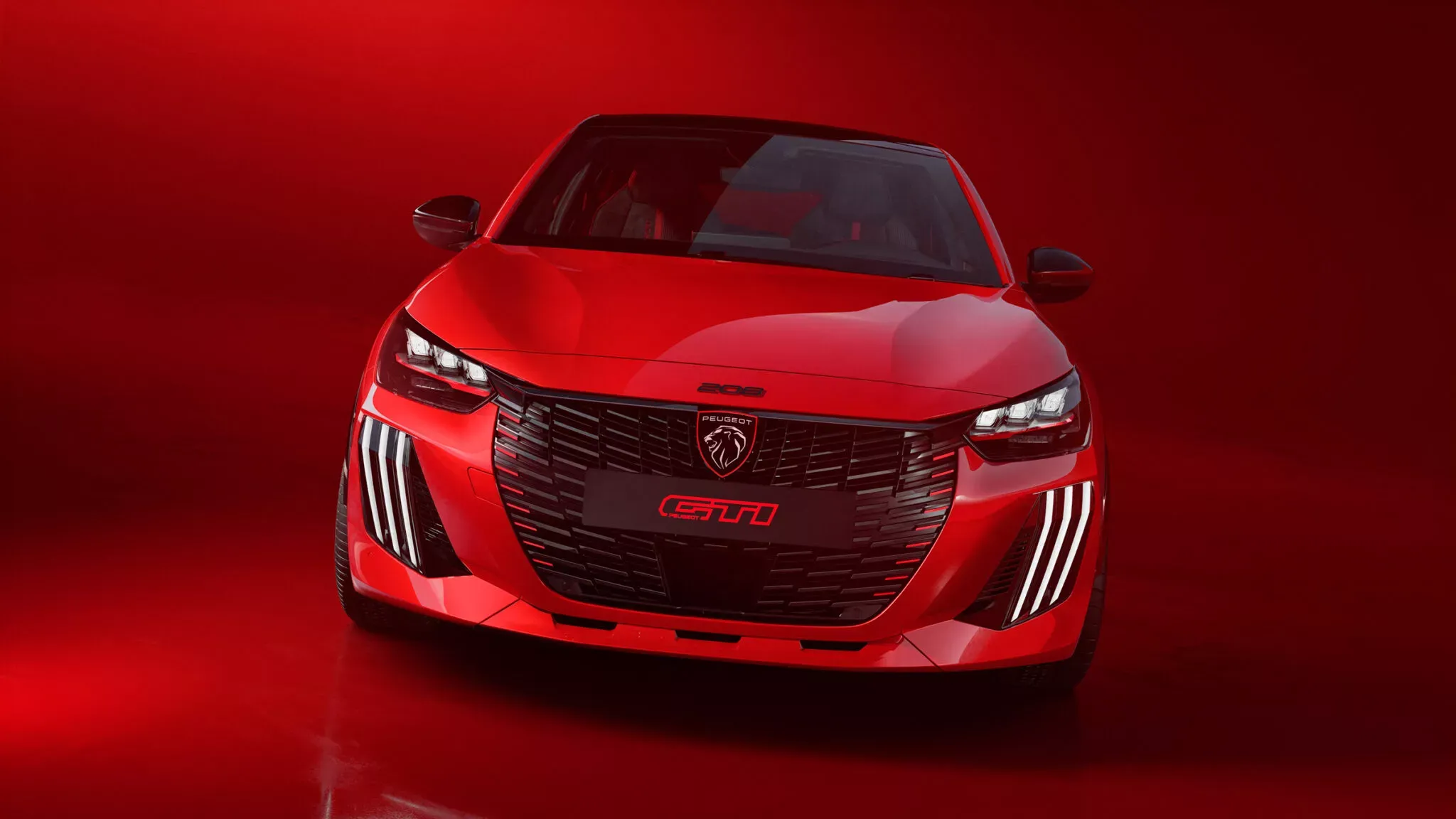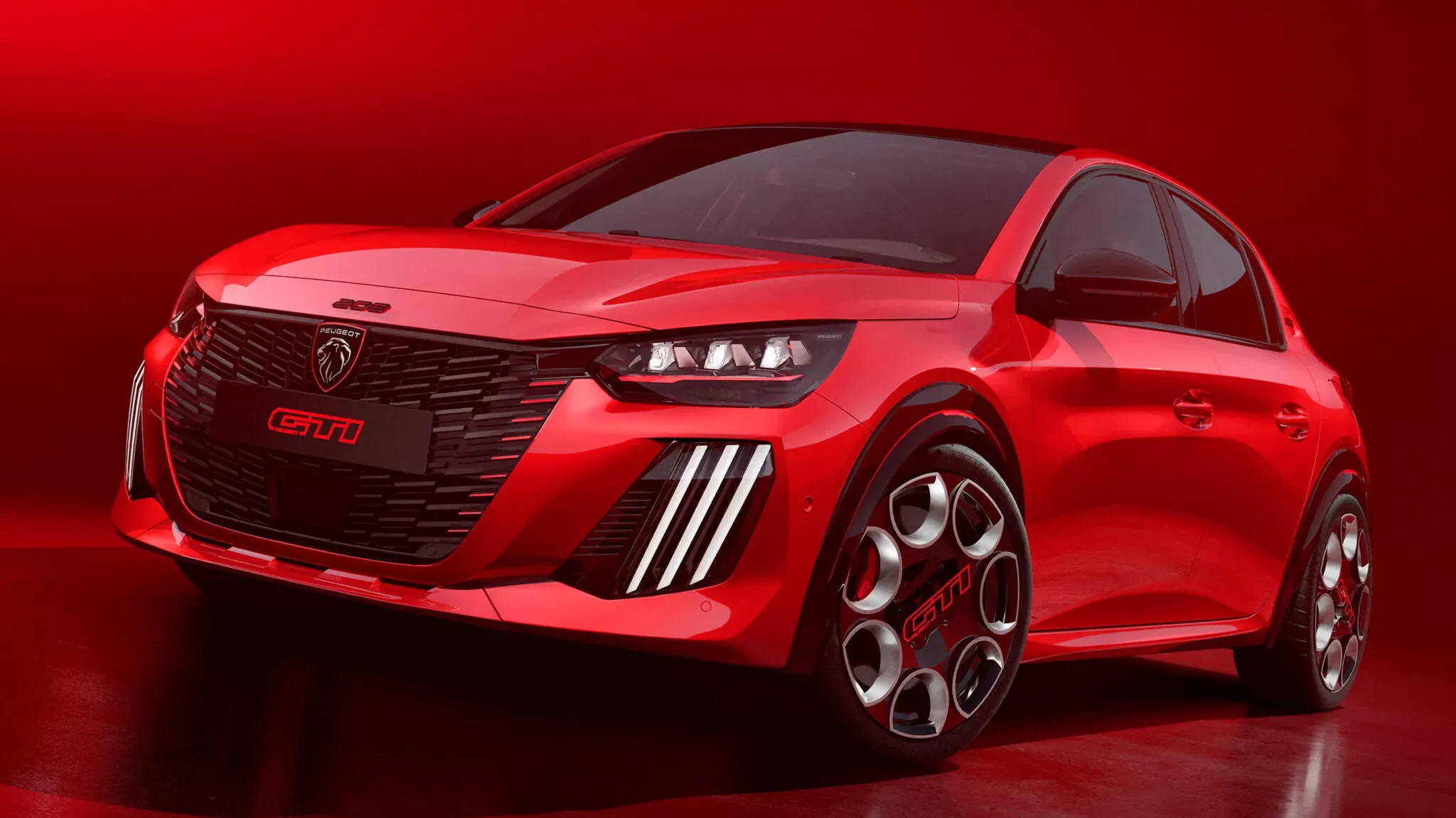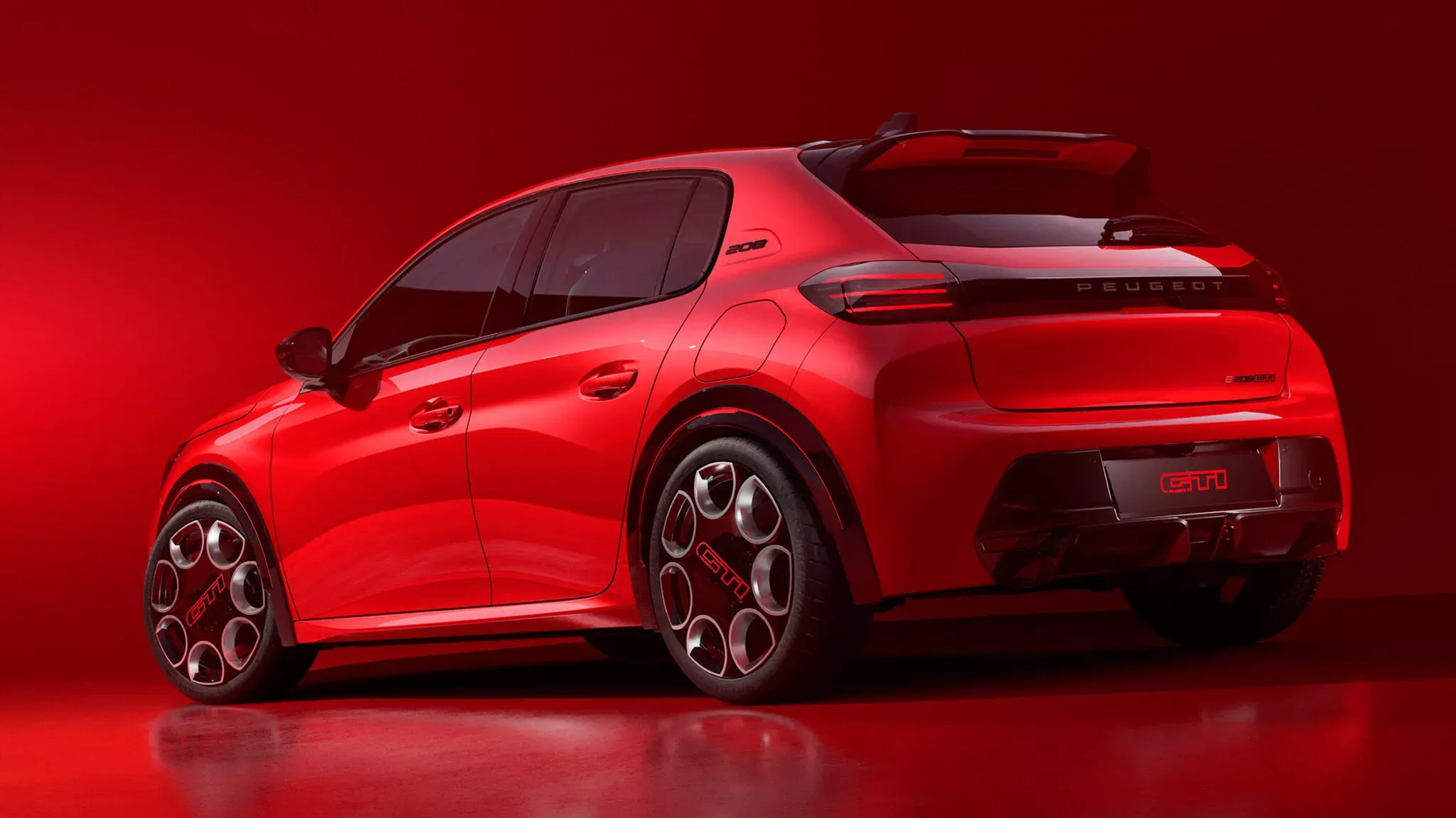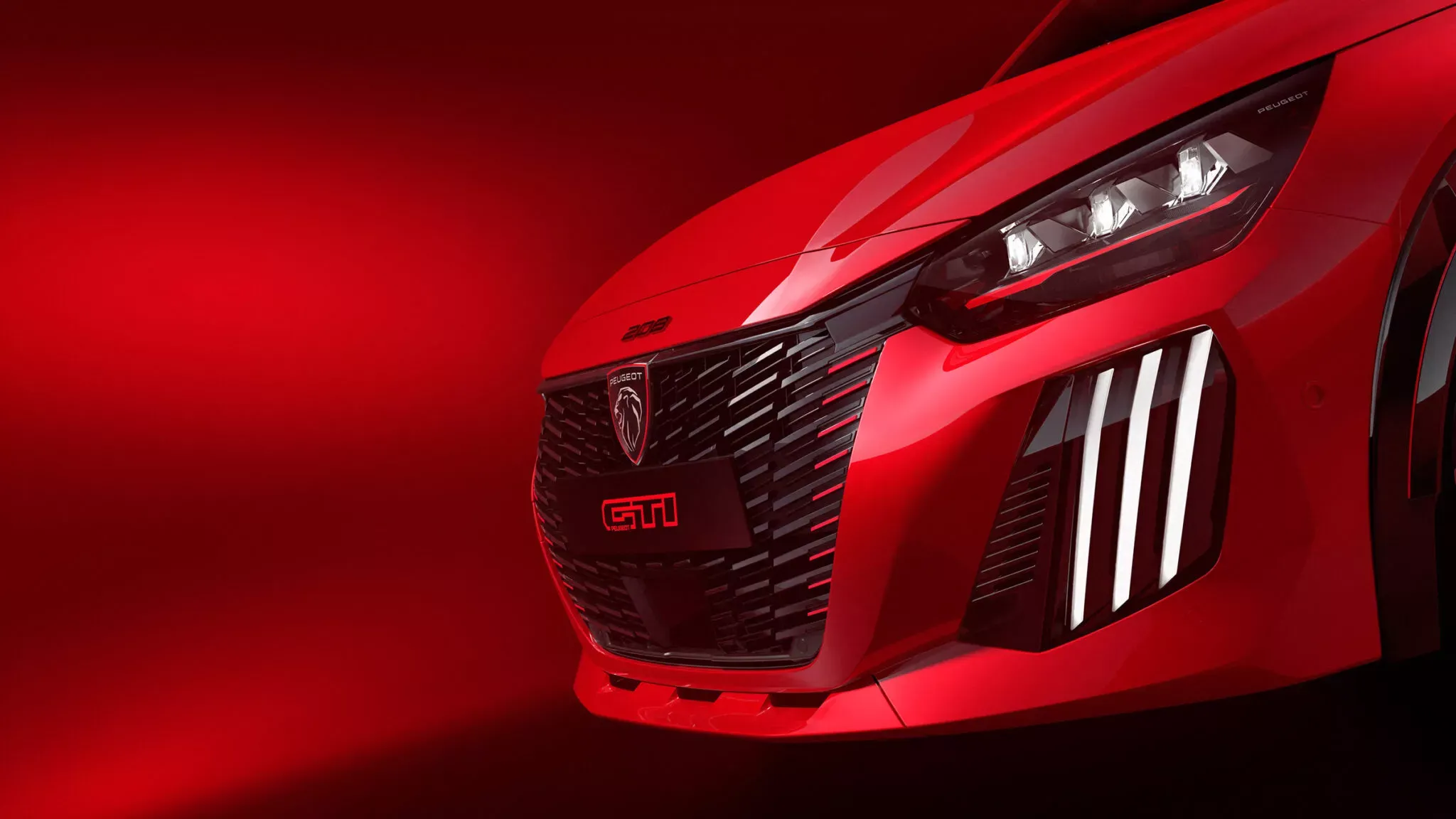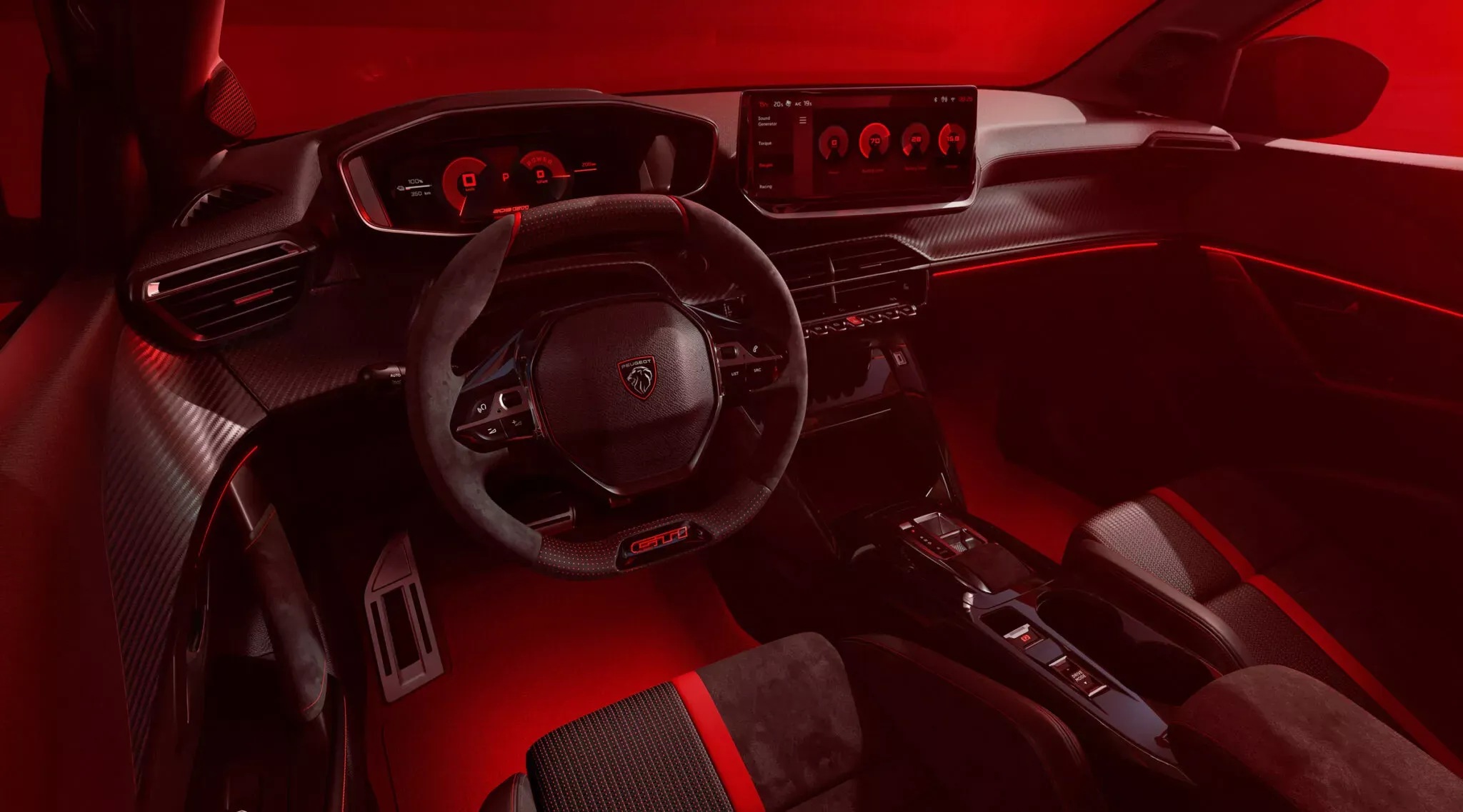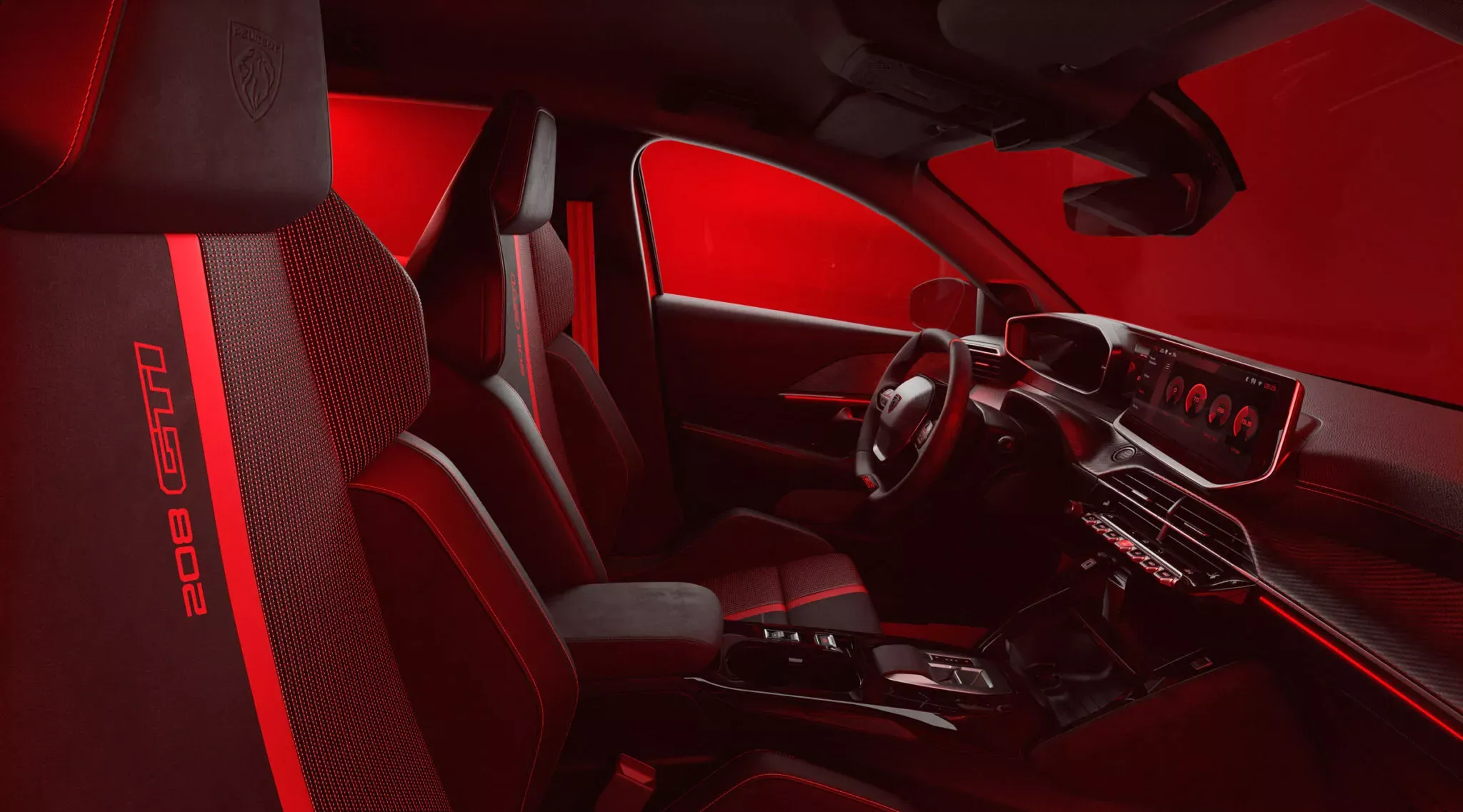Damn, who would have thought? Peugeot, with its new electric E-208 GTI, came out swinging and beat Volkswagen in the race for the first battery-powered GTI. A masterstroke that took many by surprise in the automotive market.
Did Peugeot Beat VW? The E-208 GTI Came out Swinging!
This is sure to piss off VW fans, damn! Volkswagen promised an electric GTI before the end of the decade, but Peugeot, a historic rival in the hot hatch world, revived the GTI name after six years of absence and made history: the first production electric GTI is theirs. The bombshell reveal happened during this year’s 24 Hours of Le Mans. Speaking of Le Mans, McLaren also revived a legend there with the 750S Le Mans.
The car itself is based on a version of Stellantis’ e-CMP platform, the same that supports models like the Fiat 600e and Alfa Romeo Junior Veloce. So it’s no surprise that the E-208 GTI shares much of its electric machinery with the sportier versions of these cousins within the group.
Performance That Pisses Off or Just for Cruising?
Equipped with a single electric motor on the front axle, it delivers a respectable 276 hp (206 kW) and 255 lb-ft (345 Nm) of torque. Peugeot claims this beauty goes from 0 to 62 mph in just 5.7 seconds. That’s slightly faster than the Abarth 600e Scorpionissima and the Alfa Romeo Junior Veloce, which do it in 5.9 seconds. By the way, speaking of monstrous power, the 2026 BMW XM is all about that too.
You might also like:
- Discover How the 2026 Mustang RTR Spec 5 Outperforms the GTD in Power and Costs Less—This Hidden Secret Will Blow Your Mind!
- Ducati Panigale V4 R (2026): The Ultimate Street Superbike That Feels Just Like MotoGP—See Why Riders Are Obsessed!
- Yangwang U9 Xtreme: The 496 km/h Electric Beast That Just Took Down Bugatti—Prepare to Be Shocked!
This 5.7-second sprint makes the E-208 GTI the fastest Peugeot GTI ever in acceleration, and quicker than all three electric Mini Coopers. The electric Mini JCW, with 258 hp, is 0.2 seconds slower to 62 mph. However, the Mini has an edge on top speed, reaching 124 mph compared to the Peugeot’s electronically limited 112 mph.
The 54 kWh (gross) battery is the same in both models, but the Mini manages to squeeze out a little more range (226-250 miles on the WLTP cycle) compared to the Peugeot’s 217 miles. Charging speeds aren’t spectacular, with Peugeot promising 20% to 80% in “less than” 30 minutes, which matches the Mini. But the 208 stands out in AC (alternating current) charging and is the only one to offer V2L (Vehicle-to-Load) as standard, allowing you to power external devices from the battery.
Retro Look: Tribute to the Legendary 205 GTI?
The design, damn, is where Peugeot really plays with fan nostalgia and brand history. A suspension lowered by 1.2 inches (30 mm) and widened tracks (2.2 inches up front, 1.06 inches in the rear) give it that “boxy” and aggressive stance that made the classic 205 GTI 1.9 an unforgettable visual icon.
The 18-inch wheels are a clear nod to those on the 205 1.9, with their multi-hole design and a central badge whose red “GTI” looks like it came straight off the original 205’s C-pillar. Red appears on several other details to reinforce the sporty identity: on the stretched fender flares, outer grille parts, headlights, and the imposing four-piston brake calipers biting into 14-inch (355 mm) discs.
Inside, the red theme continues with ambient lighting and digital displays in the same color (both customizable), red mats, and seat belts in the same vibrant shade. Red stitching adorns the dashboard and sport seats, whose center red stripe is another direct nod to the half-leather seats of the 205 1.9. The mesh pattern on the seats also pays tribute to the fabric seats of the 1.6 version. Speaking of cars that mark an era, the Le Mans Porsche 963 RSP is a hypercar you can almost bring home!
Chassis Technology: What to Expect from the Handling?
Besides the upgraded brakes, the GTI package includes a series of technical tweaks to ensure behavior worthy of the name. The springs and dampers were recalibrated, there’s a new rear anti-roll bar for increased stiffness and stability, and it comes equipped with Michelin Pilot Sport Cup 2 tires, ideal for those who want to take the car to the track.
The steering assist was also reworked to offer a more direct and communicative feel to the driver. The promises look good on paper and indicate that Peugeot worked hard to have the dynamics honor the GTI legacy. Another car set to shake up the track is the hydrogen-powered Toyota GR LH2 at Le Mans.
Technical Highlights of the E-208 GTI
- Single electric motor with 276 hp
- 0 to 62 mph acceleration in 5.7 seconds
- Suspension lowered by 1.2 inches (30 mm)
- Widened track (front 2.2 inches / 56 mm, rear 1.06 inches / 27 mm)
- Upgraded brakes with 4-piston calipers and 14-inch (355 mm) discs
- Michelin Pilot Sport Cup 2 tires
- 54 kWh (gross) battery
- 217 miles of range (WLTP)
- Support for V2L (Vehicle-to-Load) technology
Is It Worth It? Estimated Price and the Big Question
The E-208 GTI should hit the market by the end of this year, with an estimated price around £36,000. Converting to more globally familiar currencies, that’s roughly €42,500 or $46,000 USD, depending on the exchange rate of the day. Considering the performance, the retro appeal, and the fact it’s a milestone (the first electric GTI), it’s a price to seriously consider for enthusiasts.
Frequently Asked Questions about the Peugeot E-208 GTI
- Is the Peugeot E-208 GTI the world’s first electric GTI? Yes, Peugeot revealed the production E-208 GTI before Volkswagen officially launched its own electric GTI.
- What is the electric motor’s power output in the E-208 GTI? The single electric motor delivers 276 horsepower (206 kW).
- What is the estimated range of the Peugeot E-208 GTI? The official WLTP range is 217 miles.
- Does the electric E-208 GTI’s design reference the classic 205 GTI? Yes, the exterior and interior design include several clear and intentional visual tributes to the iconic Peugeot 205 GTI, such as the wheels, stance, and interior details.
- When will the car be available for purchase? The expectation is that the Peugeot E-208 GTI will reach the market sometime near the end of this year.
Honestly, as a car enthusiast, seeing Peugeot revive the GTI badge, even electrified, and still bring this kind of punch
Author: Fabio Isidoro
Founder and editor-in-chief of Canal Carro, he dedicates himself to exploring the automotive universe with depth and passion. A car and technology enthusiast, he produces technical content and in-depth analyses of national and international vehicles, combining quality information with a critical eye for the public.

